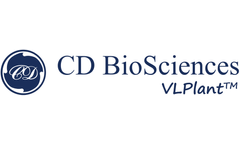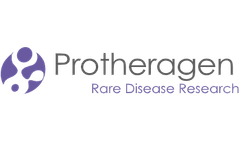Refine by
Gene Therapy Articles & Analysis: Older
63 articles found
This limitation has sparked interest in utilizing gene editing to enhance T cell functionality. The Technology Behind Gene Editing The advent of CRISPR-Cas9 technology has revolutionized gene editing, offering precision and efficiency previously unattainable. ...
In recent years, messenger RNA (mRNA) technology has emerged as a revolutionary approach in the field of medicine, particularly in vaccine development and gene therapy. The ability to deliver mRNA effectively to target cells is crucial for harnessing its potential in treating a variety of diseases, including infectious diseases, cancer, and genetic disorders. ...
In recent years, adeno-associated virus (AAV) particles have emerged as a pivotal tool in the realm of gene therapy, offering researchers and clinicians innovative approaches to treat a variety of genetic disorders. ...
Gene Therapy: Tailoring mRNA therapies to individual genetic needs has promise for treating specific diseases, including genetic disorders. By directly targeting the defective genes with engineered mRNA, scientists are paving the way for treatments that can provide functional copies of these genes. ...
This article aims to engage in an incisive analysis of cell and gene therapies, decoding their transformative implications on human health and medical research. ...
Scientists are using a variety of gene delivery strategies to insert new genes into cells. One common biological system is viral gene delivery, where the viral vectors are modified to carry the genes and deliver them to the target cells. The vectors have been used safely in gene delivery vaccines and are ...
This not only accelerates the pace of research but also enhances the efficiency and accuracy of gene editing techniques, such as CRISPR-Cas9. AI also plays a pivotal role in the development of gene therapies. ...
Drug Discovery: Observing how pharmaceuticals affect cytoskeletal integrity. ·CRISPR-Cas9 Gene Editing CRISPR-Cas9 technology has paved the way for targeted modifications in genes encoding cytoskeletal proteins. ...
Custom mRNA production has emerged as a cutting-edge technology in the field of molecular biology, offering researchers the ability to tailor-make specific messenger RNA molecules for various applications such as vaccine development, gene therapy, and regenerative medicine. This innovative process holds great promise in unlocking new possibilities in scientific ...
This approach has been particularly useful in the development of gene therapy and RNA-based therapeutics, where efficient delivery to target cells is crucial for therapeutic success. ...
This not only accelerates the pace of research but also enhances the efficiency and accuracy of gene editing techniques, such as CRISPR-Cas9. AI also plays a pivotal role in the development of gene therapies. ...
Alternative splicing refers to the process by which different combinations of exons within a pre-mRNA molecule can be included or excluded during RNA splicing, leading to the generation of multiple mRNA isoforms from a single gene. This phenomenon allows a single gene to produce different types of mRNA molecules and, consequently, different protein isoforms. ...
Disease relevant mutations can be recapitulated or even correct by introducing a point mutation with a single base change, or by inserting/deleting large gene sequences. These endogenous knock-in cell lines enable a clear understanding of the contribution of the gene or mutation to a phenotype. There are unlimited uses for point mutation cell lines at pre-defined ...
The quest for transformative cell and gene therapies has ignited a wave of innovation in biopharmaceuticals. As the industry races to unlock these treatments’ full potential, the intricacies of therapy development present unprecedented challenges. From navigating a highly regulated environment to ensuring streamlined workflows for quality ...
The process of iPSC differentiation to neurons and neuronal cells is of special importance for neurobiology and related disorders, considering the dearth of clinically relevant in vitro models available for research, drug screening and development, as well as the lack of therapy to reverse neuronal damage. Benefits and advantages of iPSC differentiation to neural stem cells ...
In addition, carboxylic acid PEGs can be involved in regulating interactions with cells, such as fusion with cell membranes and cellular uptake, providing effective carriers for cell therapy and gene delivery. Applications of PEGs and Carboxylic Acid PEGs Drug Delivery PEG and its carboxylic acid derivatives have important applications in drug delivery. ...
The fast-tracking landscape of contemporary gene therapy demands continuous advances in AAV (Adeno-associated virus) formulation development and the enhancement of cGMP (Current Good Manufacturing Practice) capacity. Together, these transformations are essential in producing safe and effective gene therapies for patients. AAV ...
Excitingly, recent advancements in gene engineering and drug R&D have led to the development of rare disease gene therapy and small-molecule drugs. Commonly, gene engineering technologies used in gene therapy include CRISPR/Cas9, zinc finger nucleases (ZFNs), transcription activator-like ...
In recent years, various nucleic acid-based therapies (NBT) have emerged as effective and specific activators of endogenous gene expression. Unlike gene therapy approaches supplementing gene expression, RNA-targeted therapy enhances protein production by selectively modulating cellular mechanisms ...
Infusing Premade Products into RNA-LNP Technology The use of premade RNA-LNP products is a compelling journey towards the future of targeted gene therapy and vaccines. Instead of making the RNA-LNPs in-house, researchers and medical institutions can procure off-the-shelf, high-quality, customizable RNA-LNP products that expedite development processes and improve ...









